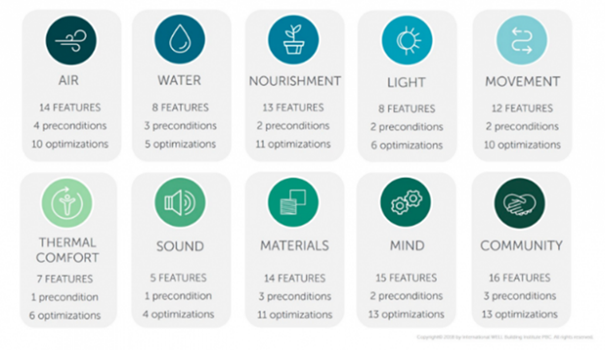What Are The Architectural Considerations For Designing Sustainable Schools?
Education is a vital part of life, and the way in which schools are designed plays a crucial role in the learning process. In South Korea, sustainable school architecture and design have been adopted to improve the quality of education and create a healthier environment for students. Here are some of the ways in which sustainable school architecture and design benefit students:
1. Improved Air Quality
Sustainable school design includes the use of natural ventilation systems that improve air quality. This is important as poor indoor air quality can lead to health problems such as respiratory issues. By having good air quality, students can concentrate better in class and improve their overall performance.
2. Energy Efficiency
Sustainable school architecture and design have a positive impact on the environment and also reduce costs. These schools use renewable energy sources such as solar panels and wind turbines to generate power, reducing reliance on traditional energy sources. Energy efficiency also means lower energy bills for the school, which can be redirected towards educational resources or other programs.
3. Green Spaces
Sustainable school design includes the use of green spaces, which help to create a more relaxed and calming environment for students. Studies have shown that green spaces have a positive impact on mental wellbeing, reducing stress levels and improving overall health. In addition, green spaces also help to promote biodiversity and reduce carbon emissions.
4. Natural Lighting
Sustainable school design incorporates the use of natural lighting, which is important for the health and wellbeing of students. Exposure to natural light has been shown to reduce eye strain, improve mood and support the body's circadian rhythm. This in turn, helps students to concentrate better in class and improve their overall performance.
5. Design Flexibility
Sustainable school design allows for greater flexibility in the use of space, making it easier to adapt to changing educational needs. With the use of modular designs, schools can quickly and easily adapt to changing class sizes or curriculum requirements. This ensures that classrooms are always suited to the needs of students and teachers, which can contribute to better learning outcomes.
6. Improved Acoustics
Good acoustics are essential in any learning environment as they help to reduce noise levels and improve communication. Sustainable school design includes the use of sound-absorbing materials and the strategic placement of walls and furniture to create a more peaceful environment. This allows students to focus on their studies without being distracted by unnecessary noise.
7. Healthier Materials
Sustainable school architecture and design incorporate the use of healthier building materials that are non-toxic and hypoallergenic. Traditional building materials have been known to release toxins and chemicals that can have a negative impact on health. By using healthier materials, students and teachers are less likely to experience respiratory problems or allergic reactions.
8. Improved Learning Outcomes
Sustainable school architecture and design have been shown to have a positive impact on learning outcomes. The improved quality of air, lighting, and acoustics have been shown to improve learning performance. Moreover, the calm environment afforded by green spaces and natural light helps students to think more creatively and critically. By improving the environment in which students learn, sustainable school architecture and design helps to improve the quality of education and the overall success of students.
FAQ
What is sustainable school architecture and design?
Sustainable school architecture and design refers to the use of environmentally friendly practices and building techniques in the design of educational facilities. These include the use of renewable energy sources, natural lighting and ventilation systems, and the incorporation of green spaces and healthier building materials.
What are the benefits of sustainable school architecture and design?
The benefits of sustainable school architecture and design include improved air quality, energy efficiency, green spaces, natural lighting, design flexibility, improved acoustics, healthier materials, and improved learning outcomes. These features work together to create a healthier and more conducive learning environment for students.
How do sustainable schools impact the environment?
Sustainable schools have a positive impact on the environment as they reduce reliance on traditional energy sources and incorporate renewable energy sources such as solar panels and wind turbines. In addition, green spaces and the use of non-toxic building materials help to promote biodiversity and reduce carbon emissions.
How do sustainable schools benefit students?
Sustainable schools benefit students in many ways, including improved air quality, energy efficiency, improved acoustics, and improved learning outcomes. By creating a healthier learning environment, students are better able to focus on their studies and achieve higher levels of success.
Are sustainable schools more expensive to build?
Sustainable schools can be more expensive to build initially but the benefits of energy efficiency, reduced energy bills, and healthier learning environments make them a more cost-effective option in the long run. These benefits also contribute to lower maintenance costs and greater flexibility in the use of space.
How do sustainable schools support the community?
Sustainable schools support the community by promoting environmental awareness and educating students on sustainable practices. They also provide a healthy and safe learning environment for students, which can improve the quality of education in the area. In addition, the use of non-toxic building materials, renewable energy sources, and green spaces helps to promote sustainability and reduce carbon emissions.
Are there any downsides to sustainable school architecture and design?
There are no significant downsides to sustainable school architecture and design. The initial costs may be higher than traditional building methods, but the long-term benefits make them a more cost-effective option. In addition, sustainable schools provide a healthier and safer learning environment for students, which can lead to better educational outcomes.
Overall, sustainable school architecture and design are beneficial for both the environment and students. By incorporating environmentally friendly practices and building techniques into the design of educational facilities, schools can improve the quality of education and create a healthier learning environment for students.



Post a Comment for "What Are The Architectural Considerations For Designing Sustainable Schools?"